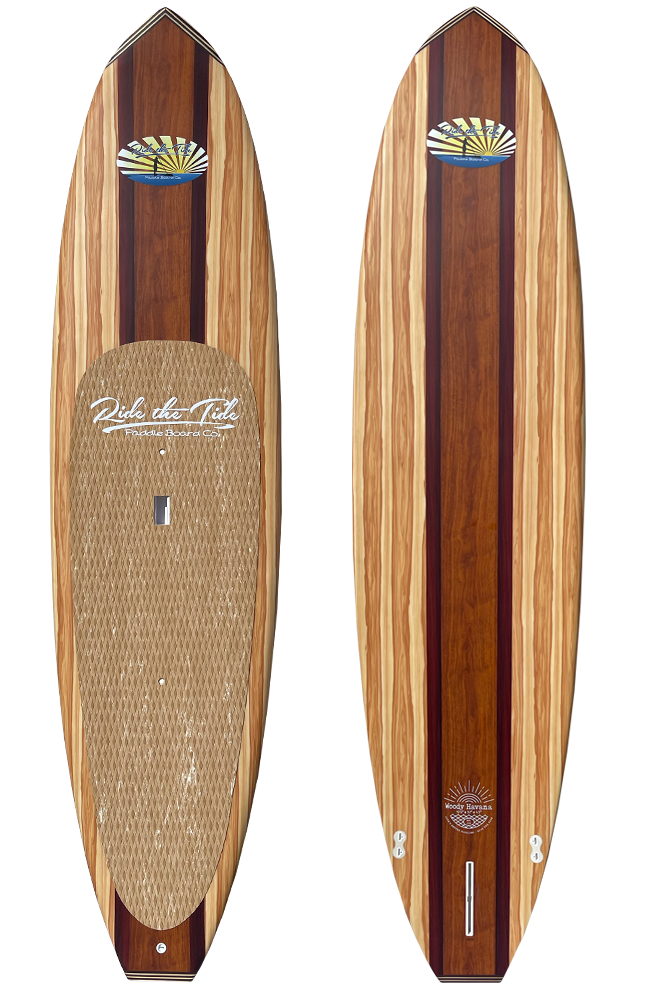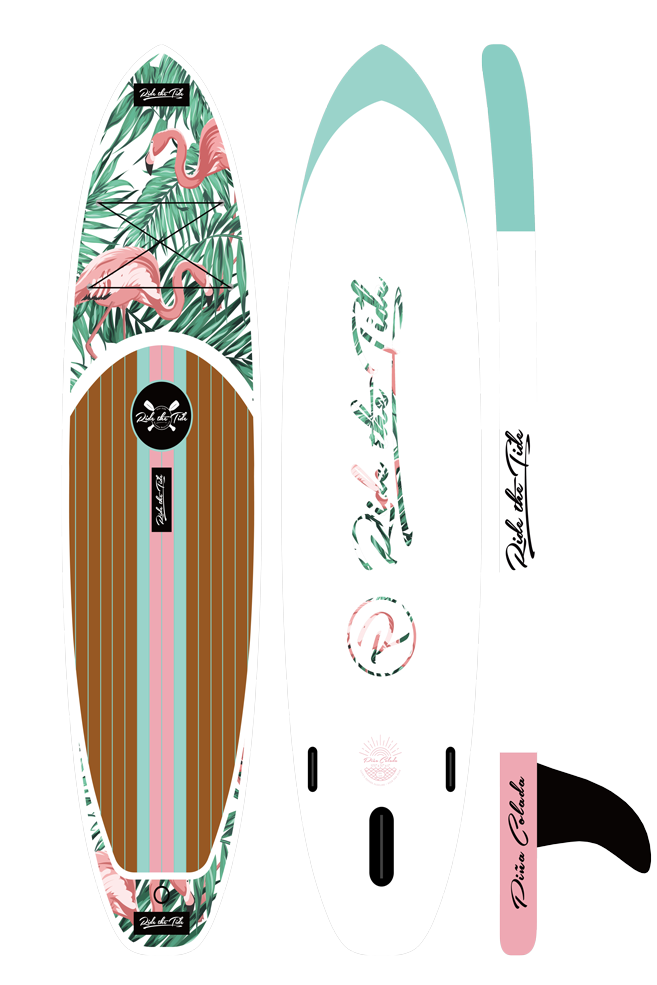- Home
- Care & Maintenance

RIDE THE TIDE SUP CARE & MAINTENANCE
Looking after your new RIDE THE TIDE Paddle Board is easy. We’ve got all the SUP protection, care and maintenance tips you need to ensure you and your board have a long, happy life together.
THE ELEMENTS
Do NOT store your board in direct or indirect sunlight while not in use!
The sun is the most damaging force on the planet, and worst enemy for your new RIDE THE TIDE board. Try to keep your board out of the sun as much as possible when not in use. Store in a cool and dry, protected area that is not exposed to direct and indirect sunlight and heat.
TYPES OF HEAT DAMAGE
Delamination - The inside of your RIDE THE TIDE board is an EPS foam core, which consists mostly of air and other gases. When the sun heats these gases they expand. As they expand they take up more space and can cause pressure to build on the inside of your RIDE THE TIDE board. If they expand too much, the pressure will push on the hard shell of your SUP and may cause the fiberglass shell to detach from the foam core. This is called delamination and can result in air bubbles being trapped between the foam core and fiberglass shell. Your warranty does not cover delamination caused by heat exposure.
AVOID DELAMINATION
Follow these simple steps to ensure a long life for your RIDE THE TIDE board:
- Never leave your board stored in direct and indirect sunlight. Keep away from any heat sources, such as a wall in a garage that cops the heat from the sun.
- Dramatic changes in air temperatures can also cause heat damage. Be mindful if you live in an area of extreme hot days and extreme temperature drops in the evening.
- The plastic Gore-Tex® vent plug is used to keep the inside of the board (the core) an air/water tight environment. It vents the board automatically, please do not loosen or remove to prevent damage to the plug.
- Always store your RIDE THE TIDE board in a cool dry place or shady area when not in use.
- You may also store your board in a RIDE THE TIDE board bag to avoid direct exposure to sunlight. Keep your fin zip open to aid in ventilation.
FADING
While your RIDE THE TIDE board is constructed of UV resistant materials, over exposure to the sun can cause the colours to fade. While this will not affect the performance of your RIDE THE TIDE board, it will over time, tarnish the beautiful timber and bamboo colours of your board - and no one wants that! Always store your RIDE THE TIDE board in a cool dry place or shady area out of direct sunlight to prevent fading.
DINGS
A ding is a depression or crack in the fiberglass shell. Dings in your board's fiberglass shell are bound to happen with regular use.
Depression Ding - This is typically just a cosmetic problem and is generally caused by rough handling of the board and there isn't really anything you can do about it.
To avoid depression dings on the top of your RIDE THE TIDE board, only stand on the board in areas where the deck pad covers the surface. To avoid dings elsewhere, handle your board with care and don't allow it to come into contact with hard surfaces with force.
Crack Ding - A crack ding is a more serious problem. Usually caused when the board comes in contact with a hard surface. A crack ding may breach the seal between the fiberglass shell and foam core allowing water to enter the foam core. Over time, the water that enters the foam core will damage the foam causing the water-damaged area of the foam to get heavier and softer. This can result in poor performance of your board and may allow the ding to grow in size.
In the event of a crack ding on your board, remove your board from the water as soon as possible and have it repaired by a fiberglass specialist. You can also attempt to repair the board using a fiberglass repair kit available at some hardware stores, surf shops or online. Your RIDE THE TIDE board is made using an EPS foam core, be sure you only use an epoxy resin based repair kit.
WATER DAMAGE
If your RIDE THE TIDE board appears to be suffering from water damage to the foam core, inspect the surface of your board for dings or cracks in the fiberglass shell. If you discover a crack or ding in the fiberglass, take appropriate action described in the 'Dings' section above.
TRANSPORTING YOUR SUP
Follow these simple steps to help ensure your board is not damaged during transportation.
- Secure the board to roof racks using high quality straps – we recommend Kanulocks
- Do not over-tighten the straps, as this can damage the board
- Place the board on the racks with the fin or fin box located towards the back of the vehicle
- Always ensure that there is sufficient distance between the two racks to securely support the board at high speeds
- Avoid driving too fast. The boards have a large surface area and driving at high speeds can cause damage to the board or your vehicle.
Do not use ratchet tie downs to secure your board to your vehicle - Ratchets are designed for machinery, not fibreglass. The foam/fiberglass construction of the board can only handle so much pressure!
Check out our shop for tie downs to protect your SUP.
GORE-TEX VENT PLUG
The plastic Gore-Tex® vent plug is used to keep the inside of the board (the core) an air/water tight environment. It vents the board automatically, please do not loosen or remove to prevent damage to the plug.
FCS FINS AND FIN BOX
Your RIDE THE TIDE board comes equipped with a standard 10' fin box. The fin box is designed to accept the standard RIDE THE TIDE fin as well as most aftermarket fins. Your fin should fit tightly into the fin box.
To install the fin, remove the aluminium plate and screw from the fin and slide the aluminium plate down into the fin box and into the recessed track. Position the aluminium plate as far forward as possible (for access later). Set the fin into the fin box by sliding the brass pin into the opening until it bottoms out, then slide the fin as far backwards as you would like. Next, push the front of the fin into the box and attach the fin to the aluminium plate with the provided head screw.
Your fin may be difficult to install the first few times, but don’t worry, this is a good thing. The tighter the fin is in the fin box, the better the board will ride. Your fin box will “open” up over time to allow the fin to slide in and out easier. If the fin is too tight, use light sand paper to sand the inside of the fin box to remove any excess plastic chips or resin that may be present.
Got questions about SUP protection, care or maintenance? Contact us.
 Loading... Please wait...
Loading... Please wait...



